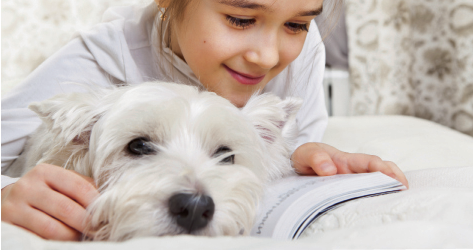Top tips for helping dogs and children enjoy a safe, happy relationship for life
Offering love, games and cuddles on tap, dogs can be a huge source of fun and companionship for children.
At a glance
- Growing up with a dog may improve children’s social
- Never leave young children alone with even the gentlest of dogs
- Help your children understand dogs are another pets

Growing up with a dog may improve children’s social skills, and caring for a pet is great for boosting their sense of responsibility too. But because young children don’t know how to behave around dogs, they’re more likely to be bitten than any other group. So here are four top tips for helping dogs and children enjoy a safe, happy relationship for life...
A different species
Children often treat dogs as their peers; hugging, cuddling, scolding and kissing them - even picking them up and hauling them around. From a dog’s point of view, children communicate very differently to adults - crying, yelling, shrieking, crawling and running about unpredictably. Even the most placid of dogs may sometimes find a bit threatening. Help your doting children understand dogs are another species – not siblings or toys – and they need to be treated with care.
Getting physical with dogs
Enthusiastic toddlers can accidentally stand on dogs’ feet, tug their ears, pull at their hair, yank their tails and tumble over them. Many dogs won’t turn a hair, but it’s best to play it safe.
Gimme some space!
Dogs can’t really say when they need a break, so their anxiety can grow without anyone noticing. There are also times when it’s much safer to give dogs a wide berth – when they’re eating, playing with a toy, sleeping, ill, injured, or even just dog tired. So provide a quite space for dogs to retreat to, and teach those enthusiastic toddlers to keep out.
Keep watching
Even if you have the gentlest of dogs, make sure young children are never left alone them. Only allow close contact when a competent adult is watching, and don’t let children approach a dog unless you know it’s friendly. Chances are, all will be fine, but being cautious is safer for your children and kinder to your much-loved dog too!
For more information on helping children and dogs get on, visit the RSPCA.